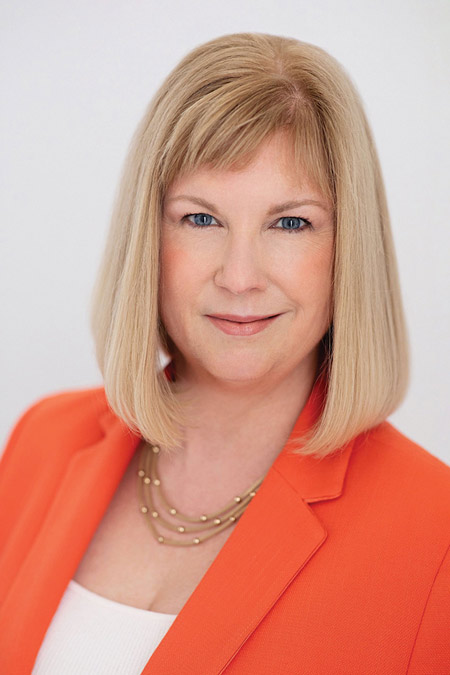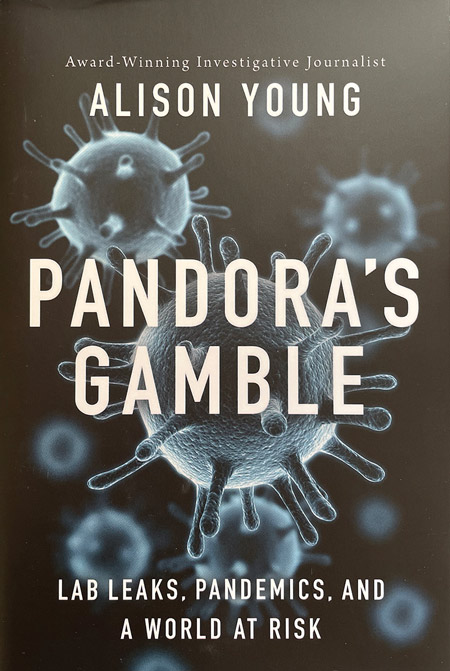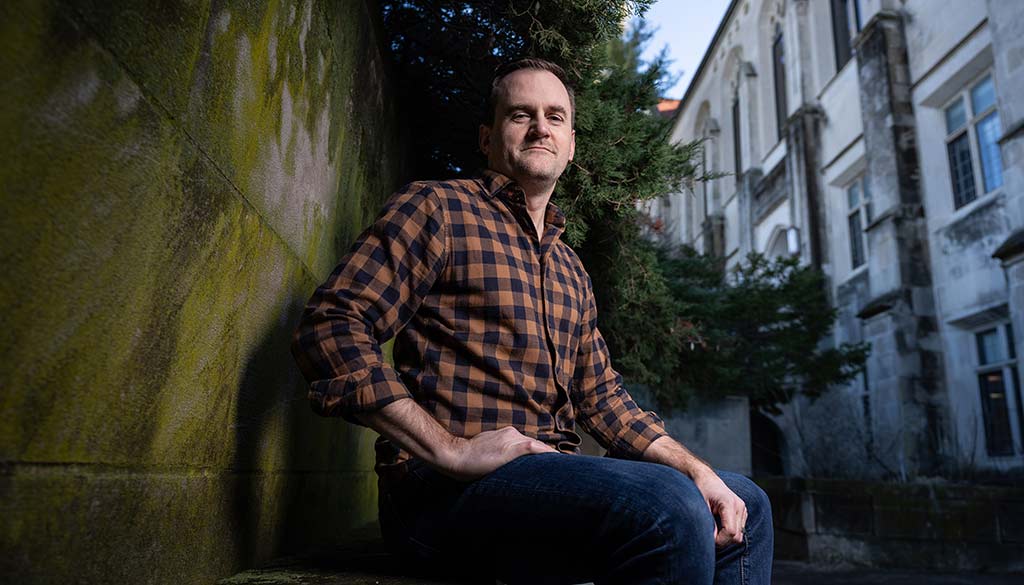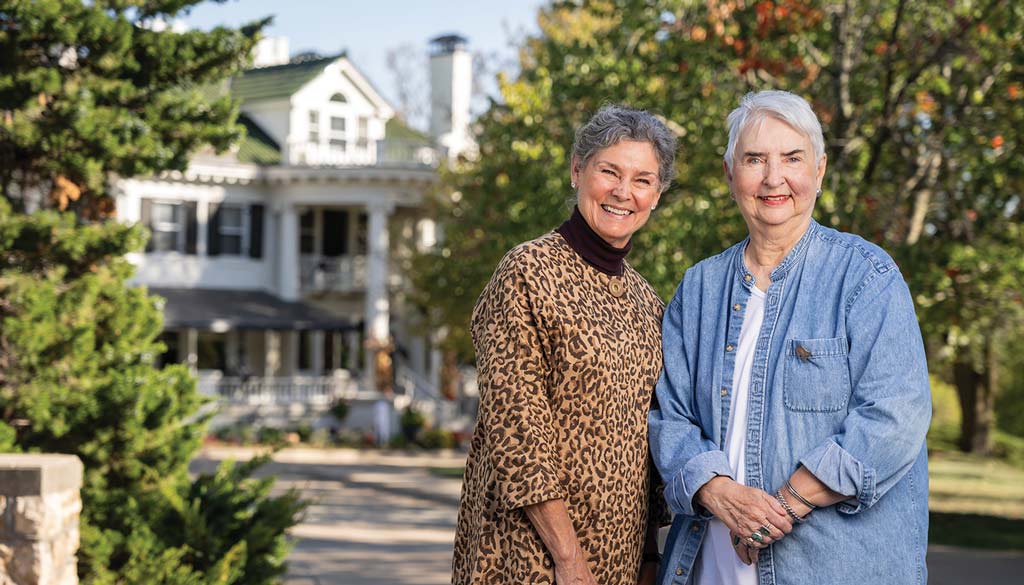Journalist traces troubling history of biolab leaks
Pandora’s Gamble, Alison Young’s deeply reported exposé, reveals human error and lax oversight in the handling of the world’s most dangerous pathogens.

As COVID-19 began spreading throughout China and the rest of the planet in early 2020, public health officials searched for an explanation of the growing contagion’s origins. Although early investigations focused on live animal markets in Wuhan, a city of 8 million, an alternative theory soon emerged.
Wuhan is home to China’s first biosafety level 4 laboratory, a facility with strict, high-containment safety protocols that allow scientists to conduct research on dangerous pathogens such as SARS-like coronaviruses from bats. Was it possible that the coronavirus spreading across the globe came not from live bats in a public market, but from a lab leak at the Wuhan Institute of Virology?
As investigative journalist Alison Young writes in Pandora’s Gamble: Lab Leaks, Pandemics, and a World at Risk, the backlash to this idea was swift, not only from the Chinese government, but also from leading scientists around the world, including the United States. “An extraordinary effort” was made to shut down any investigation of a lab accident in China, Young writes, and the theory was “derided by many scientists and journalists who publicly branded it a conspiracy theory.” The issue was complicated by President Donald Trump’s China-bashing rhetoric and America’s deep political divisions, but at the heart of the argument against the lab-leak hypothesis was the conviction that in these multimillion-dollar facilities, where the latest high-tech safety equipment is operated under strict research standards, accidents are extremely rare.
Yet, as Young, j’88, writes in her exhaustively researched, deeply troubling history of biosafety failures, “This wasn’t the stuff of crazy, politically driven conspiracy theories.”
In fact, lab accidents are not rare. Nor are they totally unpublicized, despite efforts by a wide range of players to hide them or downplay their significance.
Young has brought many of these accidents to light as a reporter and editor for USA Today, the Detroit Free Press and the Atlanta Journal-Constitution, and as an independent investigative journalist focusing on health, environmental and consumer issues. Her reporting details appalling breaches of safety protocols at labs widely considered among the top biological research facilities in the world. Two of her more alarming tales are:
- The 2018 overflow of wastewater at a U.S. Army biolab that may have spilled anthrax and the Ebola virus through downtown Frederick, Virginia; and
- The 2014 discovery of forgotten vials of smallpox virus in a National Institutes of Health storeroom in Bethesda, Maryland. (A lab employee subsequently carried the vials in a cardboard box across the urban campus.)
There are others, including a 1978 outbreak at a British lab that led to the world’s last smallpox death, and the shocking observation by Young in 2008, at a state-of-the-art, $214 million Centers for Disease Control and Prevention (CDC) building, of a lab door sealed with duct tape.
The equipment failures and safety corner-cutting that Pandora’s Gamble documents are deeply concerning. More troubling is the tendency of lab operators to overestimate their ability to anticipate potential trouble spots—also amply cited in Young’s stellar reporting.
Most galling of all, though, is the energy devoted by those charged with overseeing the safety of this important research to keeping their own failings out of the news.

Young, since 2019 the Curtis B. Hurley Chair in Public Affairs Reporting at the University of Missouri School of Journalism, has received many honors for her work, including three National Press Club Journalism Awards and an Alfred I. duPont-Columbia University Award. Among her book’s valuable details are the frequent references she makes to her reporting techniques and tools, including Freedom of Information Act (FOIA) requests, that journalism students will find valuable, and—because they document the lengths to which government agencies go to delay fulfilling these lawful requests—general readers will find infuriating.
Under FOIA rules, information can be withheld from the public only for specific reasons, Young notes, and avoiding negative publicity is not one of them. But she learns through sources and internal records that the CDC submitted documents that she requested to “public relations risk assessments” through an office tasked with identifying “emerging threats to the agency’s reputation” and implementing strategies “to promote and protect the agency’s brand.” Her sardonic assessment of this public service ethos: “Your tax dollars at work.”
We will probably never know for certain whether the coronavirus that has killed 7 million people originated in a research lab, Young concludes, but that’s partly because of decisions made early in the pandemic to resist investigating the question, not because the possibility of an accidental release of dangerous pathogens is unlikely. “What I had come to learn through more than a decade of reporting on these failures,” she writes, “was that the only thing rare about lab accidents was the public finding out about them.”
Biosafety originated in the 1950s with the U.S. decision to develop defensive and offensive weapons of biowarfare. Since President Richard Nixon discontinued the offensive program in 1969, efforts have focused on defending against bioweapon attacks from other countries. Yet, Pandora’s Gamble suggests, the greatest danger loosed on the world by the opening of this particular box of troubles has so far come not from biowarfare, but from the safety lapses of the labs dedicated to neutralizing these threats and the lax oversight of the government agencies tasked with regulating them. Failure to investigate the lab-leak hypothesis as a possible cause of the pandemic was a missed opportunity to strengthen that protection regime, Young argues. Given the high number of near misses and close calls outlined in her book, that could prove to be a costly oversight.
We have met the enemy, her eye-opening history seems to say, and he is us.
Steven Hill is associate editor of Kansas Alumni magazine.
/




